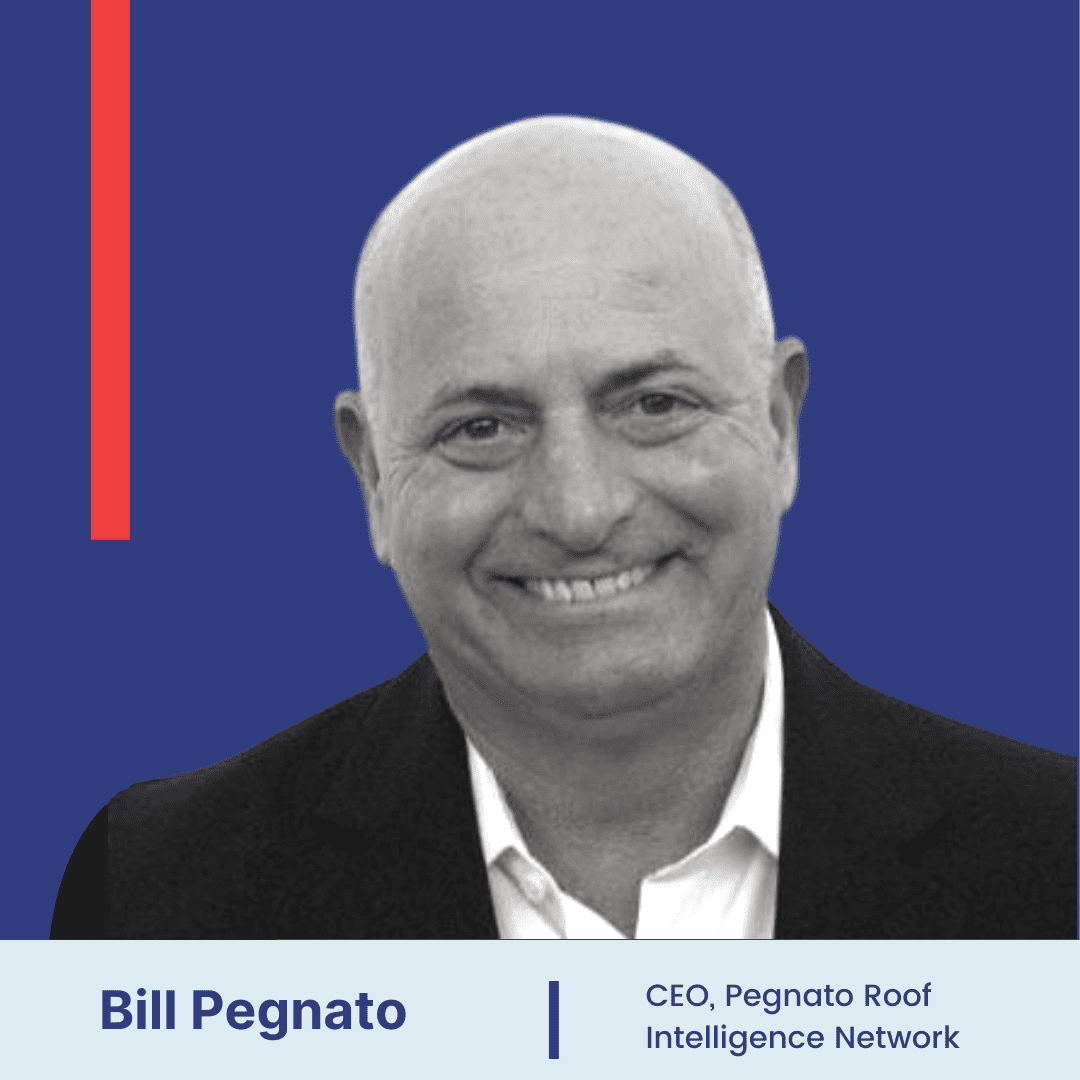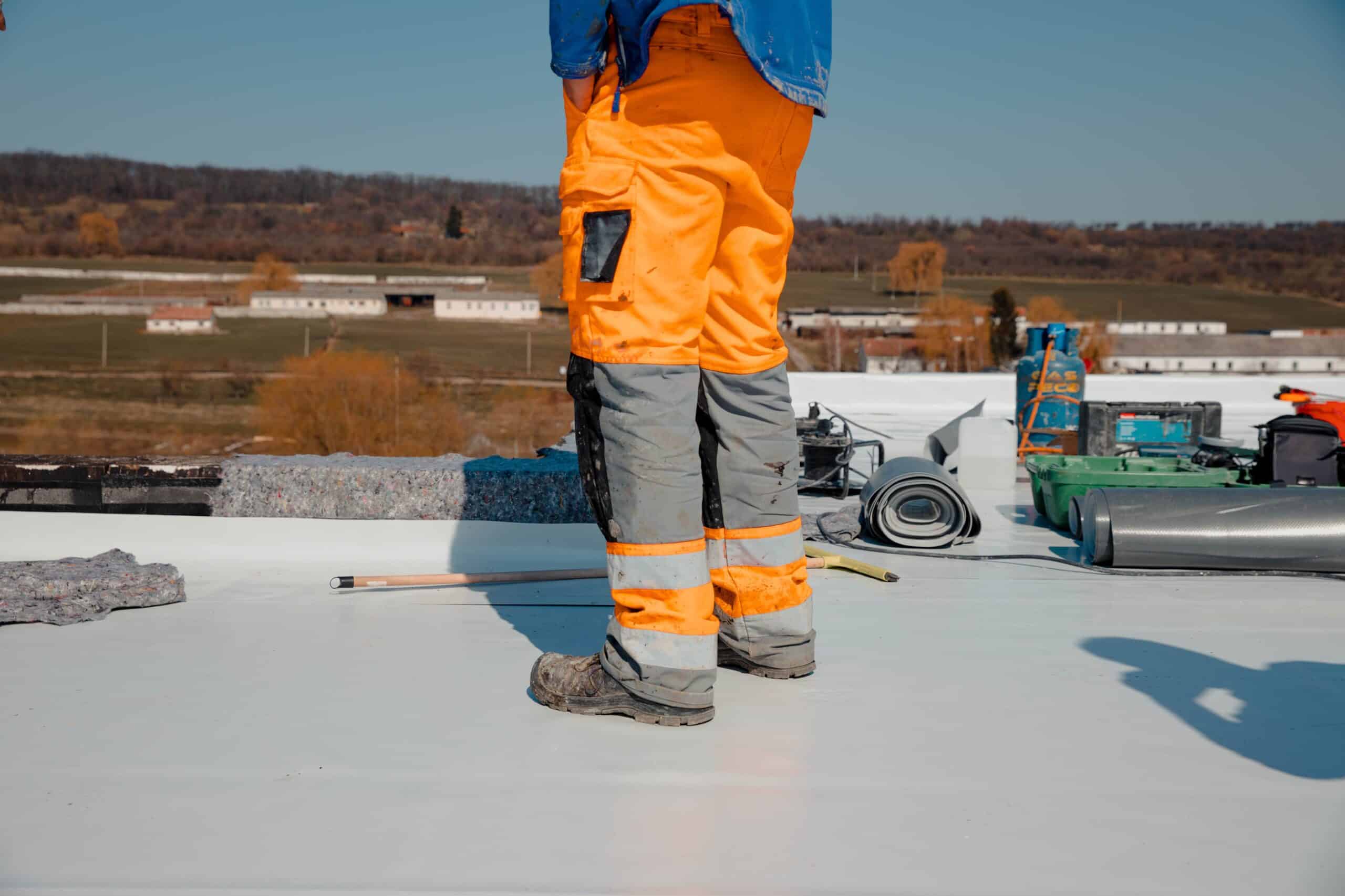Much of the excitement for the increasing availability and efficiency of commercial rooftop solar emphasizes the latter half—the solar part. But there is no rooftop solar without the roof, and that’s Bill Pegnato’s specialty.
Bill, the CEO of Pegnato Roof Intelligence Network, sees whole fields of opportunity on the tops of buildings. “I think the sky’s the limit with regards to rooftop solar,” he says. “We have this wasted space on top of roofs. We can take advantage of it in a big way, and it makes a heck of a lot of sense.”
In this interview with King Energy CEO John Witchel, Bill explains the innovation of Pegnato Roof Intelligence Network’s model, giving an intro course on commercial roofing and offering considerations for commercial rooftop solar installations.
The origins of Pegnato Roof Intelligence Network
Bill has been involved with rooftops and solar since the very beginning: his first business in 1978 was a solar hot water heating company, before much photovoltaic solar work was being done. He transitioned out of that business in the next decade to work in marketing with Bryant Roofing.
There, the company’s analyses determined that roofing repair was an underdeveloped business segment. That’s the direction Bill wanted to take, so when he left Bryant, he founded Pegnato in 1992.
“Our business has been working with national accounts from the get-go,” Bill says. Even though they started in California, they took on national chains from Chevron to Blockbuster as well as all sorts of grocery stores and large shopping centers.
A customer-centric approach to roofing
Bill proudly calls Pegnato Roof Intelligence Network the only roofers without a truck or ladder. “We’re like Uber,” he says. “We’re a roofing platform, building an ecosystem connecting roofers and roofs. We don’t fit that traditional roofing box.”
Pegnato’s technology platform connects national accounts—Bill calls them “aggregators of demand”—with great local roofing contractors. They have a number of APIs built for specific customers to suit their needs, though in a fairly typical scenario, the Pegnato team curates a call from a tenant, loads it to a contractor, and watches that service go through. And, when a service call can’t solve a problem, Pegnato does roofing inspections for their clients—plus proactive inspections for clients’ entire portfolios.
In short, Pegnato is not a roofer trying to sell a roof. The company would rather maintain the roofs their clients have, until and unless it becomes more cost-effective to replace them. The approach prioritizes the customer’s needs over maximizing profits, as well as treating roofing contractors as essential members of the ecosystem.
The company would rather maintain the roofs their clients have, until and unless it becomes more cost-effective to replace them.
This approach is shifting the way national companies think about roofing: they don’t have to think about finding quality contractors in every city they have a presence. Pegnato will take care of it for them, consolidating information and creating more consistent pricing, all with an eye toward maintaining quality roofing as long as possible.
Bill summarizes the philosophy behind the model in a single sentence: “The way we utilize data, we help you manage your roof portfolio for the lowest total cost of ownership.”
Commercial roofing 101
Commercial roofing practices have shifted significantly in the decades that Pegnato Roof Intelligence Network has been operating on them. And, considering the lifespan of roofs and the company’s philosophy of keeping them functioning, many of the earlier styles are still in use today.
Bill identifies the most commonplace roofing styles in service with his clients:
Built-up roofing, or BUR, are the asphalt enterprises with cap sheet or gravel surfacing. “They call ‘em built-up because it’s like they have a factory on the roof,” Bill says. Built properly, he says, these roofs last a long time—yet they are very expensive, and they deteriorate quickly if not maintained properly. These roofs were state-of-the-art in the eighties and early nineties.
EPDM, a black synthetic rubber roofing membrane, was the first prevalent single-ply roof to follow BUR. “It used to be used as a pool liner,” Bill says. “Some smart guy said, if it’ll hold water on the bottom, it’ll probably hold water on the top.” The primary issue with EPDM is that, because the rubber is cured, it cannot be welded to itself—it has to be glued, which means EPDM roofs have seams that can be weak points. Furthermore, a cheap way to install EPDM is with gravel ballast, which makes it difficult to maintain and horrible for installing rooftop solar.
TPO and PVC roofs are the newest generation. These materials are not cured, so the seams can be essentially welded—and the seams end up stronger than the sheets themselves. “Rooftop teams are probably seeing more TPO and PVC than anything else,” Bill says. “That’s how the industry has evolved.”
Rooftop solar professionals are essential partners in navigating the changing best practices for maintenance.
Inspections are the key to maintenance
We are all capable of recognizing a gaping hole in the ceiling. But problems occur long before the interior damage becomes obvious. Regular inspections can catch weaknesses in a commercial roof’s integrity early to minimize damage, lower the cost to maintain, and extend its viable life.
Regular inspections can catch weaknesses in a commercial roof’s integrity early to minimize damage, lower the cost to maintain, and extend its viable life.
Landing a quality roofer to conduct the inspection in person is also essential. “You can’t really inspect a roof with a drone,” Bill says. “Old-school roofer that I am, I really need to be on there. I need to feel it under my feet.”
The problems with most roofs are at the transition points, where roofers have to install flashing to direct water away from potential gaps. In a typical inspection, Bill starts with the perimeter of the roof where it meets the parapet wall—called the “base flashing.” Then, he goes into the field and looks at other transition points, such as pipes coming through the roof. Next up: cold welds, where he inspects the seams in EPDM, TPO, and PVC roofs.
The whole time, he’s got his ears to the ground (or, rather, his feet to the roof). “Sometimes I can feel the roof being a little squishy, so I know maybe the insulation’s wet underneath,” he explains. “Experienced roofers can walk on a roof and understand what they’re feeling. But generally, we’re looking at what kind of condition the penetrations are in.”
As a side note, Bill points out that many roof leaking issues are actually not the roof at all, but the air conditioning and other equipment. A flood test can identify the real culprit. “You really want to understand what you’re looking at,” he says. “Have professionals work with you to sort through these messes.”
Three considerations for rooftop solar
Commercial real estate owners considering rooftop solar can take active steps to increase the probability of a successful installation and reduce the risk of incurring rooftop troubles. Bill breaks down the three points of consideration, from preliminary stages through to post-installation.
1 – Can the roof support the life of the solar installation?
A lot of people wonder whether a roof can support the weight of solar panels. While this is clearly a consideration, Bill notes that a roof’s primary goal is not to serve as a platform for equipment, but to keep the building dry. Maintaining this goal should be any owner’s number one rooftop concern—and Bill has seen many solar installations on roofs that were not good hosts.
So, he encourages people to evaluate: What condition is your roof in now, prior to the solar? How long do you expect it to last? If your solar equipment minimum is twenty years, is your roof going to support that? “That should be looked at prior to considering whether solar is an option for a particular roof,” he says.
2 – What method will you use to install the solar?
There are a number of ways to install solar, from building racks (which penetrate the roof) to more ballasted systems (which rest on top of it).
From a roofing perspective, the fewer punctures the better. “If you’ve got a lot of pipes and flashing supporting your racks, you have more potential problems for your roof,” Bill says. Some punctures are a typical necessity—how many, and how they may impact the roof’s integrity, are serious considerations before tackling an install.
3 – Get the roofer’s blessing after the installation.
After the solar crew has finished their work, Bill recommends getting the roofers back up there to conduct a thorough inspection—whether it’s to maintain the warranty or just to ensure that all the flashings are watertight. “An inspection on the back end makes sure it’s done right,” Bill says.
Roofing for the long haul
Commercial roofing is ubiquitous, yet Pegnato’s customer-centric approach is not. Bill wants to make sure roofing is done right. When a client wants to install rooftop solar, he wants to know the roof will outlive the panels—which means knowing that quality inspectors are assessing the build, quality contractors are doing the work, and longevity and cost efficiency are the top priorities.
“We’re on a mission to really change the industry,” Bill says. “Thinking about the possibilities keeps me up at night. The wave of future rooftop solar is an exciting thing, and I think we can help.”

